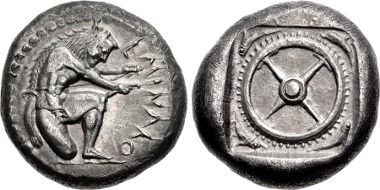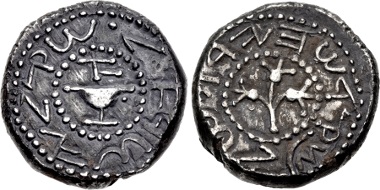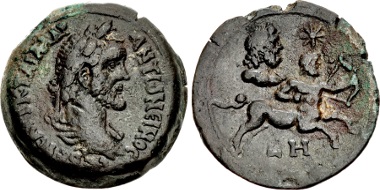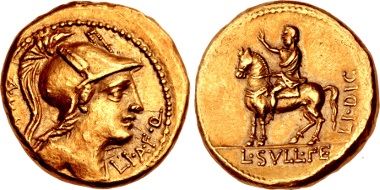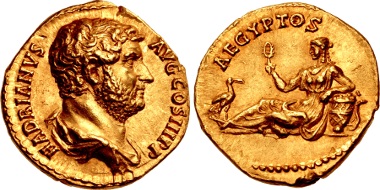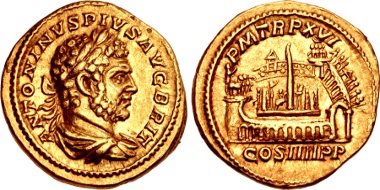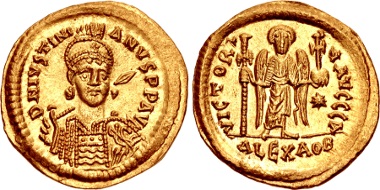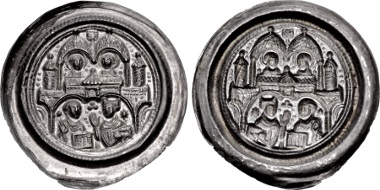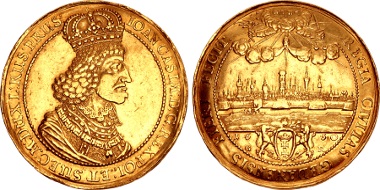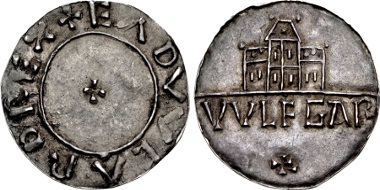07-01-2017 – 10-01-2017
Triton XX in conjunction with the 45th NYINC
Over $8m pre-sale estimate at CNG’s Triton XX
Classical Numismatic Group of Lancaster, Pennsylvania and London, England presents Triton XX, a Public, Internet, and Mail Bid Sale to be held in conjunction with the 45th Annual New York International Numismatic Convention (NYINC) on January 10-11, 2017. The NYINC is held at the Waldorf-Astoria Hotel, located at 301 Park Avenue, New York, NY 10022, between 49th and 50th Streets.
Triton XX features 1696 lots of ancient Greek, Celtic, Oriental Greek, Central Asian, Roman Provincial, Roman Republican, and Roman Imperial coinage. Additionally, there are featured selections of Byzantine, Early Medieval, Islamic, World, and British Coinage, as well as World Medals and a nice selection of large lots. The pre-sale estimate total for Triton XX is over $8 million.
Triton XX is highlighted by a number of collections, which make up the majority of coins on offer. These collections include:
- The Dr. Patrick H.C. Tan Collection of Greek, Roman, & British Coinage
- The Kallman Collection of Greek & Roman Coinage
- Selections from the Archer M. Huntington Collection – Republican & Imperial Coinage
- Collection of a Director – Republican & Imperial Coinage
- K. Collection of Roman Imperial from the 2nd-3rd Century AD
- The Continental Collection – An Exceptional Selection of Roman Gold
- The Goldman Collection – Early Byzantine Gold Coinage
- J Eric Engstrom Collection – World & British Coinage
- The Princeps Collection of Transylvania Coinage
- The Dr. Andrew Wayne Collection – Anglo-Saxon Coinage – Part 3
Just a few of the individual highlights from Triton XX are:
Lot 86: Skythia. Eminakos. Stater, circa 440-437 BC. EF. Estimate: 30,000 USD.
Eminakos is known only from his coins. Most authors speculate that he was a local dynast based in Olbia, which is almost certainly the mint for this issue, as the types appear on other coins of Olbia and almost all examples known have been found in the vicinity of that city. In his 1968 doctoral thesis, Karyshkovskij noted 21 known staters of this type, to which a few have been added over the past 48 years. It would seem, thus, that this is not an extremely rare coinage, but the vast majority are in public collections; they very rarely appear at auction – only two examples are in CoinArchives, sold in 2012 and 2014, over a decade after the previous example, the Kunstfreund specimen sold in Leu 76 in 1999.
Lot 358: Judaea, Jewish War. Shekel, dated year 1 (66/7 CE), Jerusalem mint. Protoype issue. From an American collection. EF. Estimate: 750,000 USD.
“This is one of three known examples of a prototype for the shekel of the first year of the Jewish War, beginning May 66 (or a bit later), and it is therefore the first coin type of the renowned Jewish War shekels and half shekels. One specimen, discussed further below, is in the collection of the Israel Museum, Jerusalem. The second specimen was sold in Shoshana I at a hammer of $925,000; the same coin had been sold previously in 1991 as part of the Bromberg Collection, and sold there for $242,000.
This third specimen is the only one of the three that has not been cleaned, and it retains a thin, attractive patina of the silver chlorides typically seen on the Jewish shekels. It is also the best struck of the three coins, while all three of them are slightly off-center on the reverse, this specimen shows more of the legend than the others.
In the late 1970’s, Shab’an Wazwaz, a dealer in Old City Jerusalem, offered me a group of six shekels. Three were year 2, two were year 3, and the sixth coin was the first known example of this type: Asking price was $6,000. Mr. Wazwaz was a legitimate dealer, but did have the reputation of selling the occasional forgery, and so I rejected the deal and instead offered $4,000 for the five shekels, not including the sixth. At the time, this type had not been published, and Ya’akov Meshorer had seen the coin and said he believed it was not genuine. I was unable to discuss it with Meshorer, because he was not in the country during my visit. I was a “kid” only 10 years into my study, and it looked authentic to me, but I was in no position to put up $2,000 for a questionable coin. Upon his return from abroad, Meshorer reviewed the coin again and decided to buy it for the collection of the Israel Museum, where he was chief curator of archaeology as well as numismatics.” (David Hendin, American Numismatic Society)
Lot 478: Egypt, Alexandria. Antoninus Pius. AD 138-161. Drachm, AD 144/5. From the H. Mitchell Collection. Good VF. Estimate: 4,000 USD.
Alexandria saw an immense output of coinage during the eighth year of Antoninus Pius’s reign. The Zodiac drachms, mythological types, and a host of issues for the nomes appeared that year. One explanation for this activity centers on the celebration of the renewal of the Great Sothic cycle, the point when the star Sothis (Sirius) rises on the same point on the horizon as the sun. This cycle of 1461 years began early in the reign of Pius in AD 139, and apparently prompted a renewal in the ancient Egyptian religion, while the coin types also stressed the connections to the Greco-Roman Pantheon.
Lot 519: A. Manlius A. f. Aureus, 80 BC., uncertain Eastern mint. Near NF. Estimate: 200,000 USD.
This aureus, struck during the third consulship of the dictator Sulla in 80 BC, offers an intriguing glimpse of the Realpolitik of the Roman Republic in the early first century BC. The obverse depicts a purely Roman version of the goddess Roma, complete with the archaic Republican helmet decorated with a pair of plumes. The reverse features the statua Sullae, which was located near the Rostra in the Roman Forum, and which was dedicated by King Bocchus I of Mauretania to commemorate the role of Sulla (and Bocchus) in the capture of Jugurtha. It was the Jugurthine War (112-106 BC) that set in motion the subsequent period of internal political conflict between various generals and deep division within the Senate between the patricians and the novi homines, or “new men,” all of which culminated in the civil wars of the second half of the century and the establishment of the Principate under Augustus.
The coin’s moneyer, A. Manlius A. f., also participated in the Jugurthine War. In addition to serving as a legatus to the Roman commander-in-chief, Gaius Marius (Sall.Iug. 86.1; 90.2; 102.23), he was appointed by Marius – along with Sulla – to meet with Bocchus, which resulted in the betrayal and capture of Jugurtha. Although his cognomen is unknown, Aulus Manlius was a member of the gens Manlia, one of the oldest and most patrician families of Rome. The gens boasted numerous holders of high office throughout the Republic, including a number of consuls. When the bloody civil war between Marius and Sulla broke out following the Social War (91-88 BC), Manlius allied himself with the conservative patricians who supported Sulla, rather than his old commander Marius, who was a novus homo. Nothing more is known of Manlius until 80 BC, when he struck this aureus. Why he did so remains the subject of speculation. A explanation is that the coin commemorates Sulla’s resignation of the dictatorship he held the previous year. In keeping with his traditionalist sentiments, Sulla resigned his office (including disbanding his legions) and re-established consular government; he then dismissed his lictors and entered the Forum unprotected to give an account of himself to any citizen (Plut. Vit. Sull. 34). Thus, his action may have been viewed by his adherents (and certainly Manlius), as the victorious denouement of a great man who fought to preserve the values of the ancient Republic.
Lot 734: Hadrian, 117-138. Aureus, 134-138, Rome mint. From the Continental Collection. EF. Estimate: 75,000 USD.
This coin is part of interesting series struck late in Hadrian’s reign to commemorate his travels throughout the provinces of the empire. The emperor’s journey to Egypt was particularly fateful; while Hadrian was sailing along the Nile in October AD 130, his young lover, Antinous, fell into the river and drowned.
Lot 800: Caracalla, 198-217. Aureus, AD 213, Rome mint. Near EF. Estimate: 75,000 USD.
While gladitorial combat is the sport that most people today would associate with ancient Rome, chariot races held at tracks, or circuses, were the real passion of the populace. The Circus Maximus (“largest” or “greatest circus”) lived up to its grand name, with modern scholars estimating that the building could hold some 150,000 spectators, or roughly three times the number of people that the Colosseum could accommodate (Pliny’s statement that the Circus could hold 250,000 appears to be an exaggeration). Caracalla renovated the Circus in AD 213, and rare aurei and sestertii were issued to celebrate the project.
This artistic aerial view depicts the Circus as it would be seen from the Palatine Hill. According to Pliny, the Circus was established during the reign of the Tarquinius Priscus, Etruscan king of Rome (circa 616-579 BC), although a permanent structure may not have existed until 329 BC, when the starting gates (“carceres”) were erected. By the early 2nd century AD, the structure was very close to the form that we see on our coin. In the center of the Circus we find the “spina” (“spine”), upon which is the obelisk of the Pharaoh Ramesses the Great that Augustus brought to Rome and erected in the Circus (it is located today in Rome’s Piazza del Popolo). At each end of the “spina” is a “meta”, or conical column situated where the charioteers would make their harrowing turns, while an equestrian statue of Trajan and a shrine of Cybele can be found immediately to the left and right of the obelisk, respectively.
In the foreground and to right are arcades and a prominent arched gate, while on the left we find the semicircular end of the structure, with the attic statuary of a triumphal arch of Titus visible. The temple of Sol and Luna, built into the seating, is visible on the far end of the structure, to the left of the obelisk’s peak.
The coin cited in RIC and BMCRE was in Baldwin’s stock in 1927. The example plated in Calicó, with which our coin shares the same reverse die, was sold by Freeman & Sear in 2005 (FPL 10, no. 111), while another specimen was recently sold by Künker (Auction 270, lot 8855). Our coin may be only the third or fourth known, depending on whether or not the 1927 Baldwin’s piece is distinct from the other known examples.
Lot 1043: Justinian I., 527-565. Solidus, circa 527-538, Alexandria. Unpublished in the standard references. Possibly only the sixth known. From the Goldman Collection. Superb EF. Estimate: 50,000 USD.
This type has only recently come to light and is of great importance. Previously only copper coins of Justinian were known from Alexandria, which feature the mintmark in Greek rather than Latin.
Lot 1138: Islamic. Umayyad Caliphate, temp. ‘Abd al-Malik ibn Marwan, AH 65-86 / AD 685-705. Dinar, dated AH 77 (AD 696/7), unnamed (Dimashq [Damascus]?) mint. EF. Estimate: 200,000 USD.
This is an exceptional opportunity to acquire a superb example of the Umayyad dinar struck in the year 77 of the Hijra. This iconic coin was the first of its kind to describe the tenets of the Islamic Faith rather than being issued on behalf of a political dynasty. It exercised an influence far beyond the borders of the Islamic Empire for over a thousand years. It drew a clear line between the coinage of the former rulers of the Levant, who were the Trinitarian Byzantines, and the monophysite Arabs. Its texts perfectly encapsulated the new Faith of Islam. The obverse field states the unique nature of God, and in the margin that Muhammad, as the messenger of God, was responsible for the spread of this belief. The field legend on the reverse expands on this by ruling out the incarnation of Christ as the Son of God. The margin emphasizes that the coin was struck in the name of God, rather than the Umayyad ruler, and shows the date of its striking in the new Hijra era. Thus, the legends encapsulated a vigorous response to the Byzantine gold solidus of Justinian II where an image of Christ was placed on the obverse and that of the Emperor grasping a cross on the reverse.
History does not record the exact date at which the Caliph ‘Abd al-Malik bin Marwan introduced his new coinage, but because of the rarity of this issue the cataloguer suggests that it was probably toward the end of the year 77, perhaps for the pilgrimage season at the time of the ‘Eid al-Adha. All those who held examples of this coin in their hands, and the annual issues which followed after it, carried with them a powerful missionary document, which explained all that was necessary for a follower of the Faith to accept. In an age before modern communications, coinage was the most effective messenger that the government possessed to sway the hearts and minds of the people under its rule. (CNG wishes to thank Robert Darley-Doran for his assistance in drafting the background note for this lot.)
Lot 1219: Germany, Quedlinburg (Abtei). Beatrix II von Winzeburg, 1138-1160. Bracteate Pfennig. From the Estate of Thomas Bentley Cederlind. One of two known and the only example in private hands (the other in Berlin). EF. Estimate: 5,000 USD.
This brakteate boasts an impressive pedigree to 1862! From the Estate of Thomas Bentley Cederlind. Ex Münzen und Medaillen AG 35 (16 June 1967), lot 74; Cahn 70 (15 July 1931), lot 91 (photo clipped in plates); 1862 Freckleben Hoard.
Lot 1358.
Lot 1358: Poland, Monarchy. Jan II Kazimierz. 1648-1668. AV 10 Dukaty (47.5mm, 34.81 g, 12h). Gdansk (Danzig) mint; Gerard Rogge, mintmaster. Dated 1650 G R. View of city of Gdansk (Danzig) with scenes of immediate countryside; above, radiate tetragrammaton with four arms emerging from clouds: arm to left holding olive branch; arm to right holding sword and scales; below, two arms with hands clasped together in prayer; in exergue, royal coat-of-arms with leonine supporters; date and G R (mintmaster’s initials) flanking. D&S, Gedanensis, 353; MD D50a; Czapski 1925; Kopicki –; Gumowski –; KM 52; cf. Friedberg 26 (unlisted date). EF, minor scratches and edge marks. Extremely Rare. Estimated at $100,000
Lot 1394.
Lot 1394: Transylvania, Principality. István Bocskai. 1604-1606. AV 10 Dukát (40.5mm, 35.27 g, 1h). Nagybánya (Frauenbach / Baia Mare) mint (?). Dated 1605. Resch 3; MBR 650; KM 19; Friedberg 305; Adams III 2675 (same dies). EF, toned. Estimated at $50,000. From the Princeps Collection.
Lot 1531.
Lot 1531: Anglo-Saxon, Kings of Wessex. Edward the Elder. 899-924. AR Penny (20.5mm, 1.44 g, 10h). Minster type (BMC xiii). Mercia North West mint (probably Chester); Wulfgar, moneyer. Middle period, circa 910-915. CTCE 342f (this coin); SCBI 9 (Ashmolean), 316 (same dies); BMC 111; North 667; SCBC 1075. EF, deeply toned. The reverse a masterpiece in numismatic design. One of only four specimens in private hands and with an illustrious pedigree. Estimated at $25,000.
From the Dr. Andrew Wayne Collection. Ex ‘Charles’ Collection (Dix, Noonan, Webb 93, 26 September 2011), lot 1012 and front cover; Sir John Hanham Collection; V. J. E. Ryan Collection (Part II, Glendining’s, 22 January 1952), lot 752; G. C. Drabble Collection (Part I, Glendining, 4 July 1939), lot 405; Spink Numismatic Circular XXIX.9/10 (September-October 1921), no. 96458; C. M. Crompton-Roberts Collection; A. B. Richardson Collection (Sotheby, Wilkinson & Hodge, 22 May 1895), lot 41; The Hon. R. W. Marsham Collection (Sotheby, Wilkinson & Hodge, 19 November 1888), lot 163.
For further details on the coins and any additional information, please visit the CNG website.




